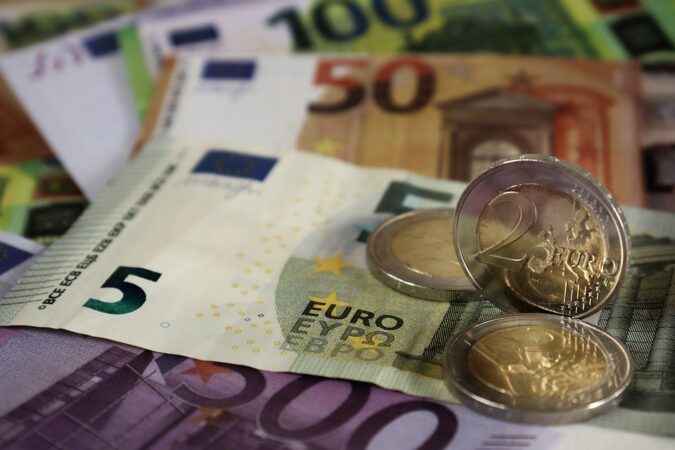
The Euro-Dollar exchange rate is hovering around 1.1400, sustaining the recent decline in the face of a broad recovery in the US currency.
A renewed risk-off wave spurred a new climb in US Treasury rates, which also helped the Dollar’s recovery in the process. Yields are rising as a result of Fed rate hike forecasts and the Russia-Ukraine situation.
Technical Evaluation
EUR/USD CHART Source: Tradingview.com
The EUR/USD pair reached a high of 1.1482 on Friday, but has since stalled at the 61.8% retrace of the 1.1691/1.1185 fall, which is now hovering around 1.1495.
According to the daily chart, a negative 100 SMA is convergent with the Fibonacci level, whereas the 20 SMA is continuing to rise above the present level below.
Technical indicators have steadied inside positive ranges, and the momentum is attempting to rebound in anticipation of another run north.
Short-term risk is tilted to the downside per the 4-hour chart. The pair is expanding below its 20 SMA, which is losing some of its bullish vigor as the momentum indicator continues to move southward inside negative levels, according to the momentum indicator.
However, the relative strength index (RSI) is now unchanged at approximately 50, indicating that there is little selling interest. If the pair falls below 1.1385, which represents the 38.2% retrace of the last collapse, the downturn might acquire momentum.
Support levels: 1.1385; 1.1345; 1.1300.
Resistance levels are as follows: 1.1435, 1.1470, and 1.1510.
An Overview Of The Fundamentals
As a result, the main currency pair retests daily and weekly lows while the US Dollar Index (DXY) gains for the third day in a row.
Nonetheless, the DXY rose 0.14% to 95.36 as US bond rates hit multi-day highs. The US 10-year and 5-year Treasury rates have risen to two-year highs, while the 2-year bond coupon has risen to February 2020 levels. The S&P 500 Futures fell 0.45% by press time, indicating a risk-off mindset.
The market’s concern regarding the Federal Reserve’s (Fed) upcoming steps, as well as Omicron, may be blamed for the high US Treasury rates. US bond rates rose on Friday after hawkish remarks from San Francisco Fed President Mary Daly and New York Fed President John Williams.
A record number of virus-related deaths in Australia and Japan has prompted the latter to declare a quasi-emergency in Tokyo and 10 other prefectures. Moreover, risk-off stories from Russia, indicating escalating tensions with Ukraine, boost US Treasury rates.
To put the EUR/USD bears to the test, hawkish European money market expectations for a 20 bps ECB rate hike clash with recent lower US consumer-centric data.
However, Lagarde is less hawkish than her Fed colleague, which gives the pair’s sellers confidence ahead of next week’s FOMC meeting.
The US will also release the January NY Empire State Manufacturing Index and the NAHB Housing Market Index next week. Prior to that, the January ZEW mood data for Germany and the Eurozone will be closely watched.













